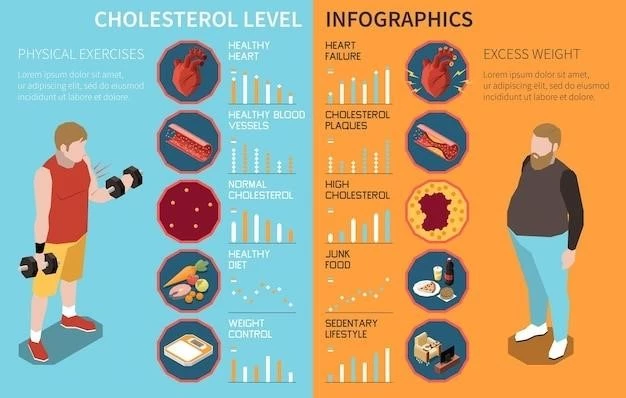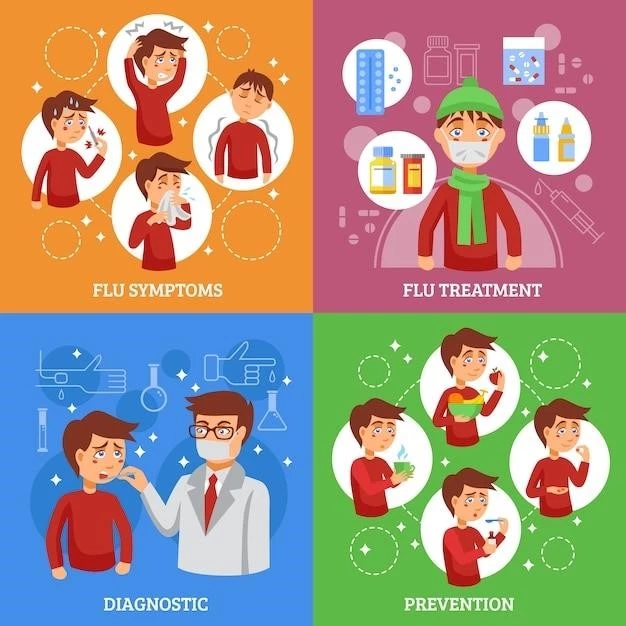Hypersensitivity Type I
Disease⁚ Hypersensitivity Type I presents an overview of allergic reactions, histamine release, IgE, common allergens, signs, symptoms, asthma, anaphylaxis, and specific allergies like food, medication, and insect sting allergies.
Understanding Hypersensitivity Type I
Hypersensitivity Type I, also known as immediate or anaphylactic hypersensitivity, is an allergic reaction initiated by the immune system in response to allergens. It is characterized by the rapid release of histamine and other inflammatory mediators. This type of hypersensitivity involves the immunoglobulin E (IgE) antibody and occurs upon re-exposure to a specific allergen to which an individual is sensitized. Common allergens triggering Type I reactions include pollen, pet dander, peanuts, shrimp, bee venom, and certain medications. Understanding the mechanisms of Hypersensitivity Type I is crucial in identifying and managing allergic reactions effectively. The body’s immune response to allergens results in various signs and symptoms that can manifest in different forms, such as allergic rhinitis (hay fever), asthma, eczema, and anaphylaxis. By recognizing the triggers and learning about the immunological processes involved in Hypersensitivity Type I, healthcare providers can develop targeted treatment plans to alleviate symptoms and improve the quality of life for individuals with allergies.
Allergic Reactions and Histamine Release
Allergic reactions in Hypersensitivity Type I are triggered when the immune system mistakenly identifies harmless substances as threats, leading to an exaggerated response. When an allergic individual encounters an allergen to which they are sensitized, the immune system produces IgE antibodies specific to that allergen. Upon re-exposure, the allergen binds to IgE antibodies on mast cells and basophils, triggering the release of histamine and other inflammatory molecules. Histamine is a key mediator responsible for the classic symptoms of Type I hypersensitivity, including itching, hives, sneezing, and nasal congestion. The release of histamine also causes blood vessel dilation, increased vascular permeability, and smooth muscle contraction, contributing to various allergic manifestations like bronchoconstriction in asthma. Understanding the role of histamine and other mediators in allergic reactions is essential for the management and treatment of allergies, as medications targeting histamine receptors (antihistamines) are commonly used to alleviate symptoms associated with Hypersensitivity Type I reactions.
Immunoglobulin E (IgE) and Sensitization

Immunoglobulin E (IgE) plays a crucial role in the pathophysiology of Hypersensitivity Type I. Upon initial exposure to an allergen, specialized immune cells present the allergen to T helper cells, which stimulate B cells to produce IgE antibodies specific to that allergen. These IgE antibodies then bind to high-affinity receptors on mast cells and basophils. This process is known as sensitization. Upon subsequent exposure to the same allergen, it binds to IgE antibodies on sensitized mast cells, triggering the release of inflammatory mediators like histamine. IgE-mediated reactions lead to the activation of the immune response and the manifestation of allergic symptoms. Understanding the process of sensitization and the role of IgE antibodies in recognizing and responding to allergens is essential in the diagnosis and management of Hypersensitivity Type I reactions. Therapies targeting IgE or interfering with the sensitization process are areas of active research aimed at developing more effective treatments for allergic conditions.
Common Allergies and Allergens
Common allergies associated with Hypersensitivity Type I involve a wide range of allergens that can trigger allergic reactions in sensitized individuals. Some prevalent allergens include pollen from grasses, trees, and weeds, dust mites, pet dander, mold spores, certain foods like peanuts, eggs, milk, and shellfish, insect venom from bees, wasps, and hornets, as well as medications such as penicillin and NSAIDs. These allergens can enter the body through inhalation, ingestion, skin contact, or insect stings, eliciting immune responses that result in the release of inflammatory mediators like histamine. Exposure to specific allergens can lead to the development of various allergic conditions like allergic rhinitis (hay fever), asthma, eczema, and anaphylaxis. Identifying common allergens and understanding their role in triggering allergic reactions is essential for diagnosing allergies, implementing preventive measures, and developing personalized treatment plans to manage symptoms effectively. Avoidance of allergens, allergen immunotherapy, and pharmacological interventions are strategies used to minimize allergic responses and improve the quality of life for individuals with allergies.
Signs and Symptoms of Hypersensitivity Type I
The signs and symptoms of Hypersensitivity Type I reactions can vary depending on the allergen, route of exposure, and individual immune response; Common manifestations include itching, hives, redness of the skin, nasal congestion, sneezing, watery eyes, coughing, wheezing, shortness of breath, and gastrointestinal disturbances like nausea, vomiting, or diarrhea. In allergic rhinitis, individuals may experience a runny or stuffy nose, itchy throat, and sinus pressure. Asthma symptoms in Type I hypersensitivity can include chest tightness, coughing, and difficulty breathing. Severe allergic reactions, known as anaphylaxis, present with more pronounced symptoms like swelling of the face and throat, rapid pulse, a drop in blood pressure, and difficulty swallowing or speaking. Anaphylaxis is a medical emergency and requires immediate intervention. Recognizing the signs and symptoms of hypersensitivity reactions is crucial for early identification, prompt treatment, and prevention of potentially life-threatening outcomes associated with severe allergic responses.
Asthma and Allergic Rhinitis in Hypersensitivity Type I
Hypersensitivity Type I is strongly associated with the development of asthma and allergic rhinitis. Asthma is a chronic respiratory condition characterized by inflammation and narrowing of the airways, leading to symptoms like wheezing, shortness of breath, coughing, and chest tightness. In individuals with Type I hypersensitivity, allergens such as pollen, dust mites, pet dander, or mold can trigger asthma attacks by inducing airway inflammation and bronchoconstriction. Allergic rhinitis, commonly known as hay fever, involves inflammation of the nasal passages, leading to symptoms like sneezing, nasal congestion, runny nose, and itching of the eyes, nose, or throat. The presence of IgE antibodies and histamine release play a crucial role in the pathogenesis of asthma and allergic rhinitis in hypersensitivity reactions. Managing asthma and allergic rhinitis in individuals with Type I hypersensitivity requires a comprehensive approach that may include allergen avoidance, pharmacological therapy (such as bronchodilators and antihistamines), immunotherapy, and lifestyle modifications to control symptoms, improve lung function, and enhance quality of life.
Severe Allergic Reactions⁚ Anaphylaxis
Anaphylaxis is a severe, life-threatening allergic reaction that can occur rapidly following exposure to an allergen in individuals with Hypersensitivity Type I. It is a systemic response involving multiple organ systems and is characterized by a cascade of symptoms, including swelling of the face, lips, or throat, difficulty breathing due to airway constriction, a sudden drop in blood pressure, rapid heart rate, gastrointestinal issues like nausea and vomiting, and potentially loss of consciousness. Anaphylaxis requires immediate medical attention, as it can progress rapidly and lead to anaphylactic shock, a condition with severe implications for cardiovascular function and breathing. Common triggers for anaphylaxis include certain foods like nuts, shellfish, and eggs, insect stings, medications like antibiotics or NSAIDs, and latex. Individuals with a history of anaphylaxis may carry an epinephrine auto-injector for emergency self-administration to reverse the symptoms and stabilize their condition until they receive professional medical care. Prompt recognition, early intervention, and appropriate management are crucial in the effective treatment of anaphylaxis and the prevention of adverse outcomes.
Specific Allergies⁚ Food, Medication, and Insect Sting Allergies
In Hypersensitivity Type I, specific allergies to food, medications, and insect stings are prevalent and can elicit diverse allergic reactions in sensitized individuals. Food allergies commonly affect both children and adults, with triggers such as peanuts, tree nuts, shellfish, eggs, milk, and wheat causing immune responses that manifest as gastrointestinal symptoms, skin reactions, respiratory issues, or anaphylaxis. Medication allergies can occur in response to drugs like antibiotics, nonsteroidal anti-inflammatory drugs (NSAIDs), or contrast agents, leading to skin rashes, hives, or severe systemic reactions. Insect sting allergies, often triggered by bees, wasps, or hornets, can result in localized swelling, itching, hives, and in severe cases, anaphylaxis. Diagnosis of specific allergies involves detailed medical history, allergy testing, and identification of trigger substances. Management strategies may include allergen avoidance, carrying emergency medications like epinephrine, and desensitization protocols. Understanding the distinct features of food, medication, and insect sting allergies is essential for tailored treatment approaches to mitigate allergic reactions effectively.
Management and Treatment of Hypersensitivity Type I
The management and treatment of Hypersensitivity Type I aim to control symptoms, prevent allergic reactions, and improve the quality of life for individuals with allergies. Strategies include allergen avoidance by identifying and minimizing exposure to triggers like pollen, dust mites, pet dander, or specific foods. Medications play a crucial role in treating allergic conditions, with antihistamines, corticosteroids, bronchodilators, and epinephrine auto-injectors being commonly used depending on the symptoms and severity of the reaction. Immunotherapy, such as allergy shots or sublingual immunotherapy, can help desensitize individuals to specific allergens, reducing the intensity of allergic responses over time. Lifestyle modifications like maintaining a clean indoor environment, wearing protective clothing during outdoor activities, and carrying medical alert information for severe allergies are essential measures. Education about allergy management, recognizing early symptoms of allergic reactions, and seeking prompt medical care in case of severe episodes are key components of effective treatment. Collaborating with healthcare providers, allergists, and immunologists can aid in developing personalized management plans to address the unique needs of individuals with Hypersensitivity Type I.
